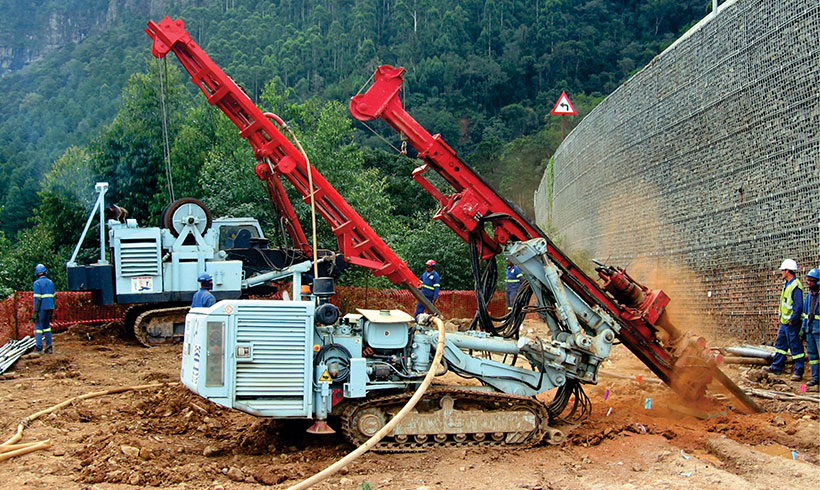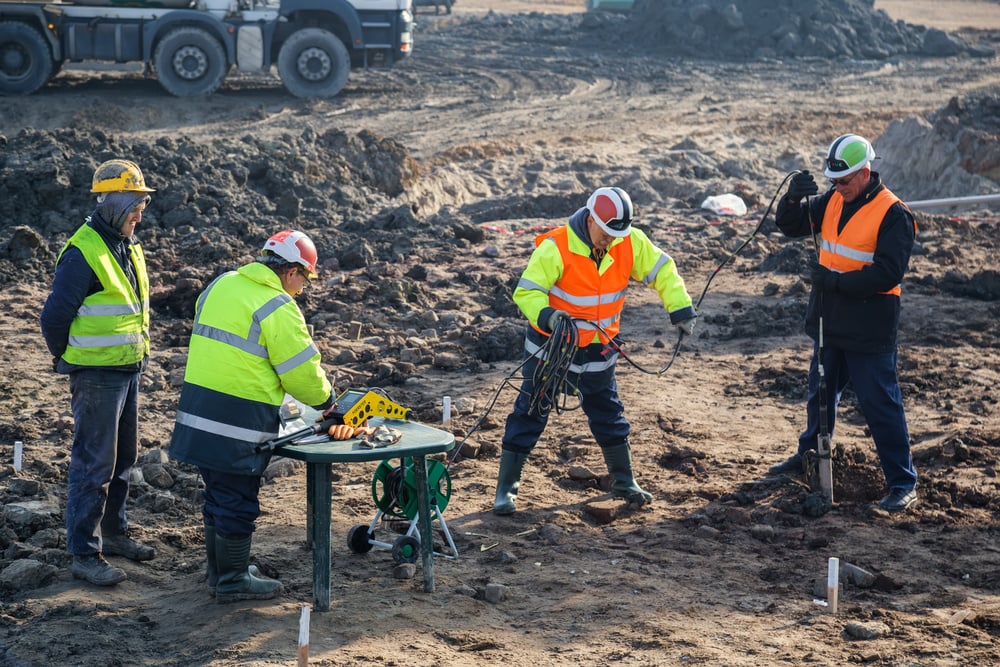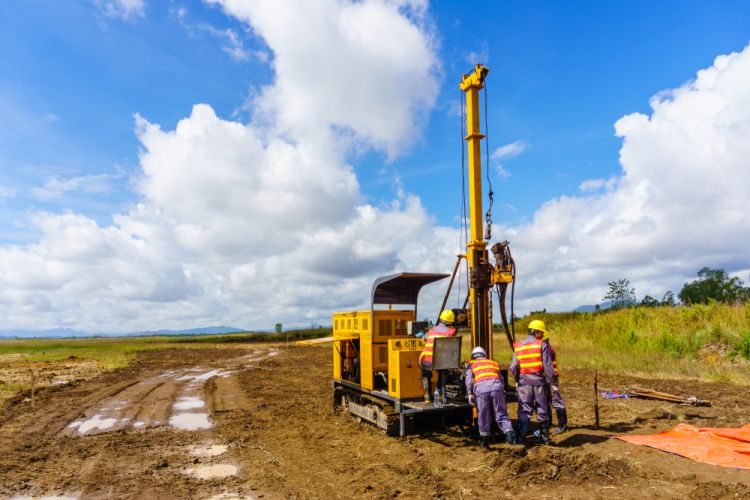The Main Principles Of Geotechnical Engineering For Construction Projects
The Only Guide for Geotechnical Engineering For Construction Projects
Table of ContentsThings about Geotechnical Engineering For Construction ProjectsNot known Factual Statements About Geotechnical Engineering For Construction Projects The Geotechnical Engineering For Construction Projects DiariesRumored Buzz on Geotechnical Engineering For Construction Projects6 Easy Facts About Geotechnical Engineering For Construction Projects DescribedGeotechnical Engineering For Construction Projects Things To Know Before You BuyThe 25-Second Trick For Geotechnical Engineering For Construction Projects
Concepts and Practice of Ground Improvement. Ground Improvement Concepts And Applications In Asia. Layout analysis in rock auto mechanics.Cengage Knowing, Stamford, 666 p. Atkinson, J., 2007. The technicians of soils and structures. Taylor & Francis, N.Y., 442 p. Floating Offshore Wind Generators: Feedbacks in a Sea state Pareto Ideal Designs and Economic Analysis, P. Sclavounos et al., October 2007. Nicholson, D, Tse, C and Dime, C. (1999 ). The Observational Approach in ground engineering concepts and applications.
Geotechnical Engineering For Construction Projects Fundamentals Explained
Laboratory and field testing plays an essential duty in this process. By extracting samples from the planet's subsurface and using a suite of tests, geotechnical designers can anticipate the behavior of dirt layers and evaluate their viability for numerous building endeavours. The essence of geotechnical engineering in civil engineering can not be overemphasized, attributable to a number of elements: The preliminary action in any geotechnical research entails establishing the dirt type at the building and construction site.
Understanding these features ensures that just ideal dirt types are picked for the development, therefore avoiding possible structural failures. The structure serves as the bedrock of any type of building and construction project. Choosing the appropriate foundation kind is a choice that hinges on the detailed evaluation supplied by geotechnical design. This makes certain the longevity and stability of structures by accommodating the loads they will certainly birth.

Geotechnical website investigation is an essential action in the preparation and execution of any building job. It entails the collection and evaluation of information connected to the physical buildings of dirt and rock underneath a recommended building and construction website. This details is essential for the layout and construction of safe, stable, and sustainable frameworks.
4 Easy Facts About Geotechnical Engineering For Construction Projects Explained
In this blog, we will certainly explore the relevance of geotechnical site examination, its numerous parts, and just how it profits construction jobs. Geotechnical website examination, additionally called subsurface expedition, entails a series of tasks focused on figuring out the soil, rock, and groundwater problems at a building site. The key goals are to recognize potential geotechnical hazards, evaluate the design properties of subsurface products, and supply referrals for the layout and building of structures, preserving wall surfaces, and other frameworks.
This may consist of geological maps, aerial pictures, previous investigation reports, and historic data. The desk study aids in recognizing potential geotechnical problems and preparing the subsequent fieldwork. Adhering to the desk study, a site reconnaissance is carried out to aesthetically check the site and its surroundings. This includes observing the topography, drain patterns, existing structures, greenery, and any type of indicators of instability or disintegration.
Geotechnical Engineering For Construction Projects Can Be Fun For Anyone
Shallow examination pits are excavated to directly observe and example the soil and rock. This technique is valuable for examining the top layers of the subsurface and click over here now determining near-surface hazards. Non-invasive geophysical approaches, such as seismic refraction, ground-penetrating radar (GPR), and electrical resistivity tomography (ERT), are made use of to map subsurface conditions and identify anomalies.
Dirt and rock examples gathered during the area examination undergo lab screening to establish their physical and mechanical buildings. Usual lab tests consist of grain size analysis, Atterberg limits, compaction tests, triaxial shear tests, and loan consolidation examinations. These examinations supply essential information for geotechnical analysis and style. The information accumulated from the click this link workdesk research, site reconnaissance, area investigation, and research laboratory testing are evaluated and analyzed to create a thorough understanding of the subsurface problems.
The primary benefit of geotechnical site examination is ensuring the safety and security and stability of frameworks. By recognizing the subsurface problems, designers can design foundations and other architectural components that can endure the tons and ecological pressures they will certainly be subjected to. This lessens the threat of negotiation, subsidence, and structural failure.
4 Easy Facts About Geotechnical Engineering For Construction Projects Described
This guarantees reliable and risk-free building practices. Geotechnical website investigations are often called for by constructing codes and policies.
This information is important for project supervisors, designers, and professionals in creating practical timetables, spending plans, and contingency strategies. Geotechnical Engineering for Construction Projects. Skyscraper Building in a Coastal AreaIn a coastal city, a high-rise property building was intended on a site with thought loosened sand down payments and a high water table. An in-depth geotechnical examination, including borehole boring, CPT, and geophysical surveys, was performed
Some Known Incorrect Statements About Geotechnical Engineering For Construction Projects
Based on these findings, the structure design was modified to include deep stack foundations prolonging right into secure strata, and ground improvement strategies, such as vibro-compaction, were carried out to reduce liquefaction threats. This aggressive approach ensured the safety and security of the structure while avoiding pricey post-construction removal. Facilities Development on a Sloping TerrainA major facilities task, entailing the building of a freeway and bridges, was intended on a hilly terrain with steep inclines.

The Leaning Tower of Pisa (Italy), a famous architectural marvel, is notorious for its unintentional tilt from significant geotechnical concerns. The tower's foundation was improperly you can look here developed to handle the soft, unpredictable soil beneath it, bring about unequal settlement and its distinct lean. Our world is dotted with outstanding framework projectsfrom towering high-rises to sprawling bridgesall standing testament to the development of the numerous building and construction devices and approaches offered.
Geotechnical design is a customized area within civil design that concentrates on researching the behavior of earth materials. This branch digs deep right into the groundinvestigating just how the soil, rock, and groundwater at a construction site can influenceand be influenced bythe framework that we put up on and right into them. Prior to a single block is laid or a concrete structure poured, geotechnical engineers probe right into the earthgathering critical information concerning the site's soil make-up, rock framework, and groundwater degrees.
Some Ideas on Geotechnical Engineering For Construction Projects You Need To Know

is a device utilized to assess the honesty and load-bearing ability of stacks throughout installment, leveraging the principle of wave propagation. It optimizes building and construction performance by providing real-time examinations, hence ensuring safe and efficient stack structures. Among the practical applications of geotechnical engineering includes determining and performing the ideal approaches for foundation construction.
Pile driving represents even more than the plain act of putting structural components right into the ground. As a matter of fact, it is a carefully orchestrated process of moving a framework's lots past the much less steady soil layers closer to the surfacedown to the more substantial strata that exist under. In the instance of stack driving, consider just how geotechnical designers skillfully use this strategy to equally disperse the structure's weight.